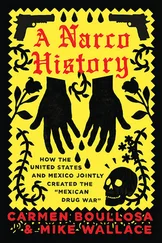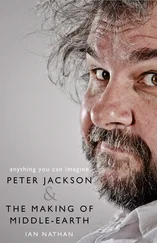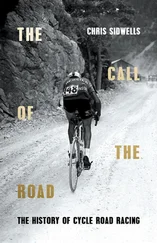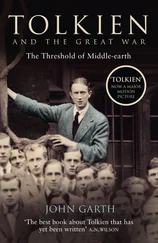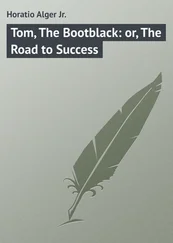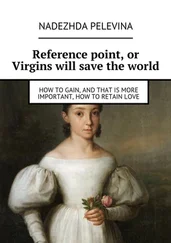You can divide all philologists into these groups, those who study words only for the sake of the things, or those who study things only for the sake of the words.
Grimm had no doubt that the former class was superior, the latter falling away into pedantry and dictionaries. Of that former class Tolkien was the preeminent example.
* The tower looking out over the sea, for instance, is a strong and private image of Tolkien’s own for what he desired in literature. The 1920 poem ‘The Happy Mariners’ begins ‘I know a window in a western tower/That opens on celestial seas …’ In The Lord of the Rings (p. 7) the hobbits believe that you can see the sea from the top of the tallest elvish tower on the Tower Hills; but none of them has ever tried to climb it.
CHAPTER 3 THE BOURGEOIS BURGLAR
The word and the thing: elves and dwarves
Sigelhearwan , Nodens, Fawler, fancy, glamour: stripped of its layers of scholarly guardedness, the essence of Tolkien’s belief was that ‘the word authenticates the thing’. This was a belief grounded on philology. Tolkien thought, indeed he knew, that he could distinguish many words and word-forms into two classes, one ‘old-traditional-genuine’, the other ‘new-unhistorical-mistaken’. From this he went on to form the opinion, less certain but still highly plausible, that the first group was not only more correct but also more interesting than the second; it had compelled assent over the millennia, it had a definite ‘inner consistency’, whether or not that was the ‘inner consistency of reality’ or merely of Secondary Art.
These beliefs go a long way towards explaining Tolkien’s sudden displays of scrupulosity. In 1954 he was ‘infuriated’ to find that the printers of the first edition of The Lord of the Rings had gone through it, with the best will in the world and in conformity with standard English practice, changing ‘dwarves’ to ‘dwarfs’, ‘dwarvish’ to ‘dwarfish’, ‘elven’ to ‘elfin’, and so on. Considering the hundreds of changes involved (and the cost of proof correction) many authors might have let the matter ride; but Tolkien had all the original forms restored (see Biography , p. 290). In 1961 Puffin Books did much the same thing to a reprint of The Hobbit , and Tolkien complained to his publishers ( Letters , p. 313) at greater length. His point was that even in modern English many old words ending in -f can still be told from new ones by their plural forms: old words (or at least old words of one particular class in Old English) behave like ‘hoof’ or ‘loaf’ and become ‘hooves’, ‘loaves’, while new ones (unaffected by sound-changes in the Old English period) simply add -s, as in ‘proofs’, ‘tiffs’, ‘rebuffs’. Writing ‘dwarfs’ was then, to Tolkien’s acute and trained sensibility, the equivalent of denying the word its age and its roots. Much the same reasoning had led Jacob Grimm, many years before, to leave the word Elfen out of his dictionary altogether, as an English import, replacing it with the native form Elben (which no one actually used any more) – his argument is repeated almost verbatim in the advice to German translators in Tolkien’s ‘Guide to the Names in The Lord of the Rings ’, p. 164. Even more than ‘dwarfs’ Tolkien disliked the word ‘elfin’, since this was a personal and pseudo-medieval coinage by Edmund Spenser – the poet hailed by the OED ’s citations as the dawn of modern literature, and also the man whose first poem, The Shepheardes Calendar of 1579, was ornamented by the most offensive gloss that Tolkien probably ever encountered. In quick succession this declared that for all its age ‘that rancke opinion of Elfes’ [sic] should be rooted ‘oute of mens hearts’ as being a mistaken form of the Italian faction the ‘Guelfes’, and was in any case a Papistical notion spread by ‘bald Friers and knauish shauelings’. 1 Tolkien would not have known whether to be offended most as philologist, as patriot, or as Roman Catholic! All round, the gloss no doubt confirmed him in the belief that modern and erroneous spellings went with stupid and self-opinionated people.
Belief was reinforced further by the history of the word ‘fairy’. The OED , true to form, said that this was the word that should be used: ‘In mod. literature, elf is a mere synonym of FAIRY, which has to a great extent superseded it even in dialects.’ But whether this particular fact was true or not, Tolkien knew that much else of the OED ’s information on such points was wrong. Its first citation for ‘fairy’ in its present sense is from John Gower, 1393, ‘And as he were a fairie’; but as Tolkien remarked in ‘On Fairy-Stories’ ( Tree p. 8), what Gower really wrote was ‘as he were of faierie’, ‘as if he had come from (the land of) Faërie’. Just above the OED cites the earlier poem of Sir Orfeo as evidence for the belief that ‘the fairy’ could be a collective noun, ‘the fairy-folk’: ‘Awey with the fayré sche was ynome’, i.e. presumably ‘she was taken away by the fairy-people’. Tolkien made no overt remark on the matter, but his translation of Sir Orfeo , published in 1975, has the line correctly translated, ‘By magic was she from them caught’. ‘Fayré’ in that context means ‘glamour’, the deceptio visus of the inhabitants of Fairyland. The gist of these observations for Tolkien must have been that ‘fairy’ in its modern sense was a newer word than the OED realised; that it was furthermore a foreign word derived from French fée ; and had been throughout its history a source of delusion and error for English people, ending in the compound words ‘fairy-tale’ and ‘fairy-story’ which as Tolkien observed in ‘On Fairy-Stories’ were badly defined, uninformed, and associated with literary works (like Drayton’s Nymphidia ) bereft of the slightest trace of sub-creation or any other respectable literary art.
Good writing began with right words. Tolkien accordingly schooled himself to drop forms like ‘elfin’, ‘dwarfish’, ‘fairy’, ‘gnome’, and eventually ‘goblin’, though he had used all of them in early works up to and including The Hobbit. 2 More importantly he began to work out their replacements, and to ponder what concepts lay behind the words and uses which he recognised as linguistically authentic. This activity of re-creation – creation from philology – lies at the heart of Tolkien’s ‘invention’ (though maybe not of his ‘inspiration’); it was an activity which he kept up throughout his life, and one which is relatively easy to trace, or to ‘reconstruct’. Thus there can be little doubt what Tolkien thought of the ‘elves’ of English and Germanic tradition. He knew to begin with that Old English ælf was the ancestor of the modern word, was cognate with Old Norse álfr , Old High German alp , and for that matter, had it survived, Gothic *albs. It was used in Beowulf, where the descendants of Cain include eotenas ond ylfe ond orcnéas , ‘ettens and elves and demon-corpses’, and in Sir Gawain and the Green Knight , where the seven-foot green giant with his monstrous axe is described nervously by bystanders as an aluisch mon or uncanny creature. The wide distribution of the word in space and time proves that belief in such creatures, whatever they were, was once both normal and immemorially old, going back to the times when the ancestors of Englishmen and Germans and Norwegians still spoke the same tongue. Yet what did the belief involve? Considering concept rather than word, Tolkien must soon have come to the conclusion that all linguistically authentic accounts of the elves, from whichever country they came, agreed on one thing: that the elves were in several ways paradoxical.
Читать дальше

